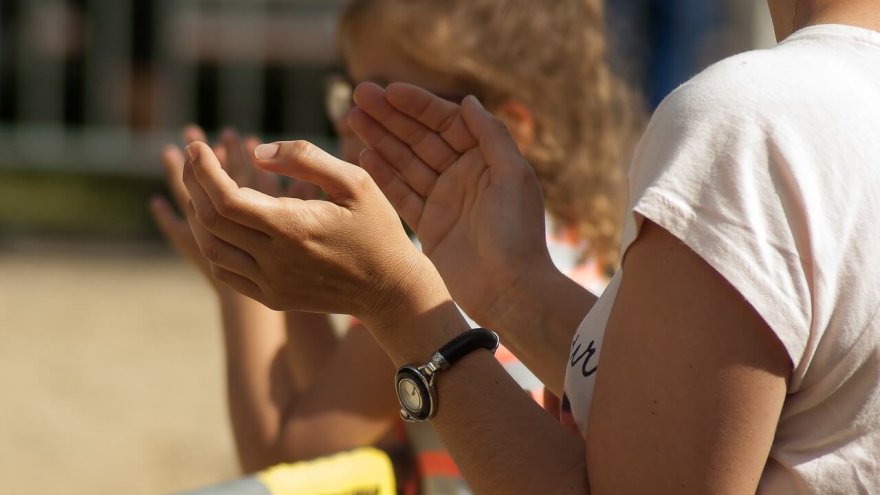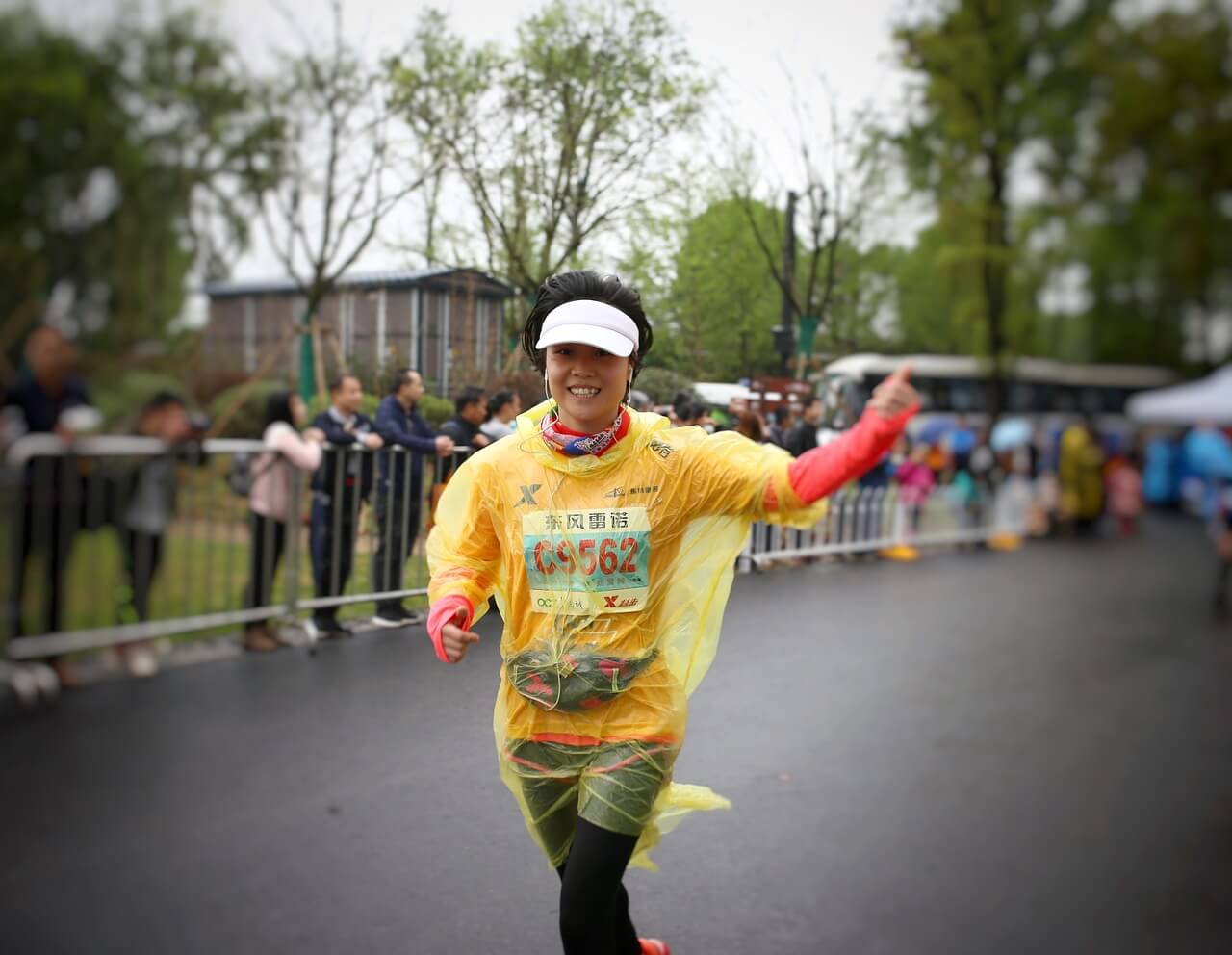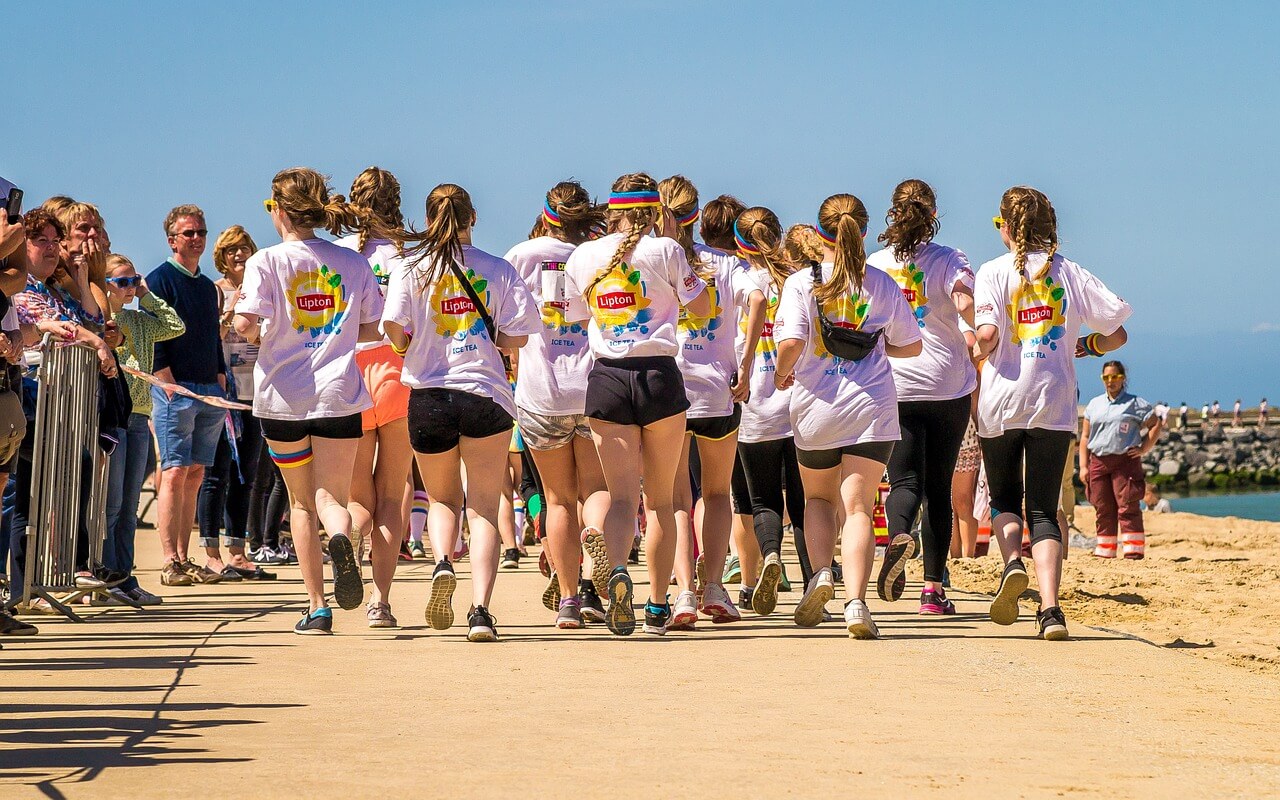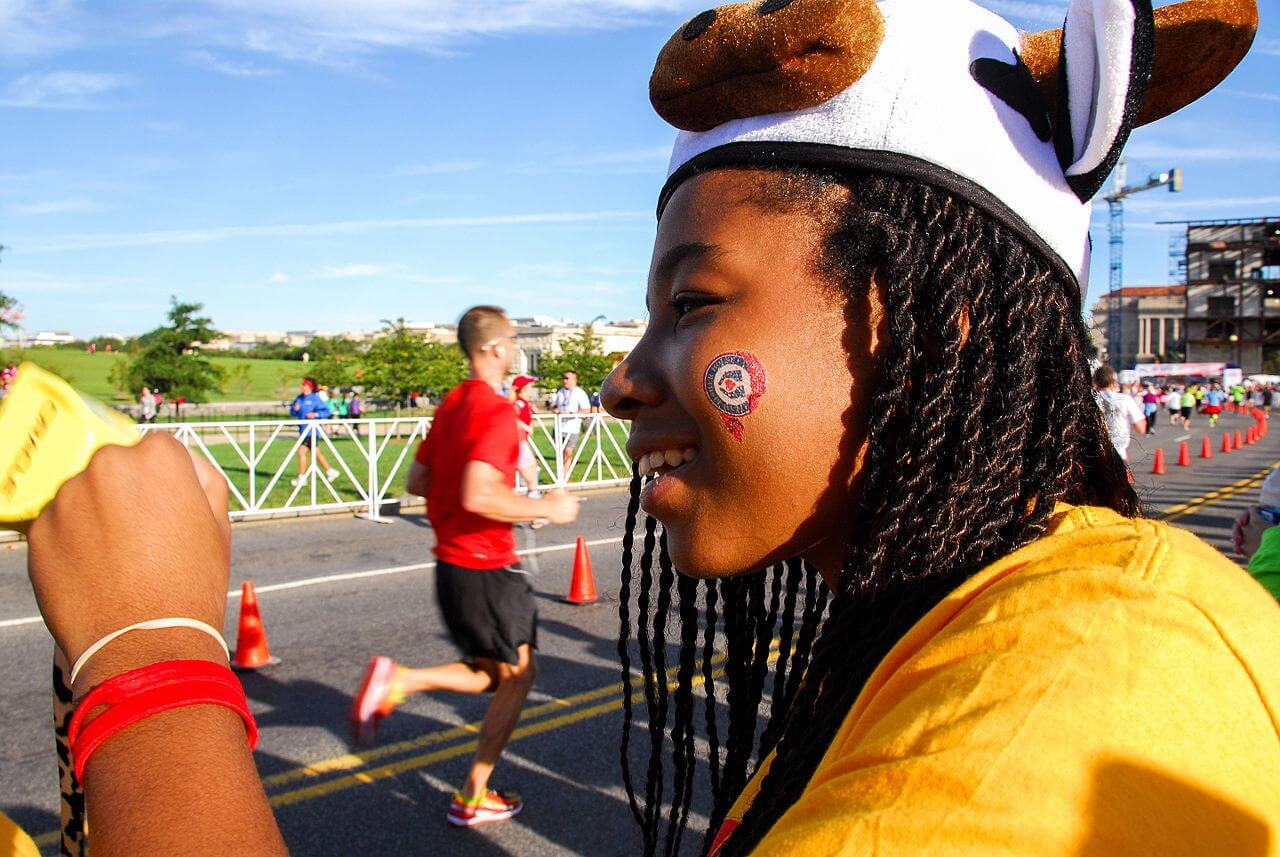Race Spectating as a Runner

While you are running a race sometimes there is a teeny tiny element (or giant desire) to be that spectator standing on the side of the race course drinking their coffee and shaking a cowbell. And as a spectator you know for sure you’d never tell a runner “you are almost there” when, in fact, you are not even halfway.
The problem is that even when you are a spectator it’s just not as the average, non-runner Joe watching. No matter the reason you are on the sidelines, with the exception of an injury, the runner in you just can’t stop thinking, evaluating and problem-solving. You look at things no one else would think of. Ever watched a race and noticed participant’s shoes? Non-runners would look at someone’s shoes and think “I like those.” A runner is looking at the effects the shoes will have on the runner. Imagine if you noticed someone was running in a brand new pair of shoes or ones that seem to have so many miles on them they might fall apart right there on the course.
What is it like in the mind of a runner when they watch a race?
The Weather
Most people will judge the weather based on if it’s “nice”. If it is 70 degrees and sunny at a race start the spectators are going to talking about how nice the weather is that day. The reality is that good spectating weather usually means bad race weather. A race day that’s cloudy and in the 40s sounds like great PR weather to any runner but will make spectators miserable. Now that’s not to say that all icky spectating weather is good for races, torrential downpours are not ideal for anyone: runners, spectators or organizers.

As a runner, you are going to see the weather’s effect on people like others can’t. You’ll be able to tell you who feels good in the current conditions and those that would prefer the weather be a bit different. You’ll take note that the weather has increased 5 degrees in the past 40 minutes. Having probably run a hot race yourself, you will do the math on their finish time and what the temperature will likely have climbed to, and possibly be a little happy you aren’t running the race if it has a large temperature swing.
Race Attire
While we each are specific in what attire works for us in a race, we often see roughly the same clothing choices in those running around us. We start and stick with others that run our pace. Watching a race you get to see everyone from the front elite, to other speedsters, to middle and back of the pack and the group that chooses to run in costume.

As a runner, it’ll take you less than a second to recognize those that are overheating and those that were cold the first mile but will be very happy the remainder of the race. The other interesting sight you will see are the costumes. Some will be simply matching tech shirts, to which you won’t give a second glance– they’ve done this before. Some costumes will be utterly insane, and you’ll be able to knowingly watch and guess what issues they will have. They could have chaffing or get extremely hot. It could get heavy or the bouncing up and down it causes could be annoying. Non-running spectators are going to comment and cheer. You, on the other hand, will feel pretty bad for them if the costume is not runner friendly.
Stride After Stride
Each person has their own very distinct, personal gait but when you watch a race it’s startling how many different forms there are when it comes to running. Unless someone has a very strange running form it’s almost guaranteed that a non-runner won’t notice. However, you will.

You’ll notice those that overpronate, the few who underpronate and those that seem to float. If you see someone running on their toes you’ll wonder how their calves don’t cramp and you’ll ponder the inefficiency of a person who wastes valuable energy by bouncing when they run. One thing that is certain, on your next run you will pay more attention to your gait that you have in a long time and try really hard to make it “perfect.”
Cheering
It’s a safe general observation that runners are so focused on actually paying attention during spectating that their “cheering” isn’t really stereotypical cheering. Of course when a fellow running buddy runs by there are some woo-hooing and name screaming, but generally, runners know that generic cheering often falls on deaf ears. What runners are good about is saying the right thing.

If you have ever been on the backside of a race, especially a long one, you know the power of words from someone who gets it. A kind stranger reminding you to “drop your arms a bit”, “you can catch them”, “looking strong”, “nice pace” or other specific comments can help immensely. When spectating, you get to be that person for someone else. Help a fellow runner out and choose your words wisely and make it personal.
The Takeaway
Watching a race as a runner just isn’t the same as it is for a non-runner. You will always evaluate and empathize. If you happen to be spectating with a non-runner they will look at you funny when you make comments because they don’t see the same things you see. While it’s nice to spectate and stand on the side of the street on occasion, it’ll always be more fun to be running down the street with a number strapped to your chest.
Latest Articles
 Is Running on a Treadmill Easier Than Running Outside?Runners have their own preferences, whether it is treadmill running, running outside on the road, or exploring trails. So...
Is Running on a Treadmill Easier Than Running Outside?Runners have their own preferences, whether it is treadmill running, running outside on the road, or exploring trails. So... Is It OK to Use Trail Running Shoes on the Road?While trail running shoes can be used on roads, especially in situations where a runner encounters mixed terrains or pref...
Is It OK to Use Trail Running Shoes on the Road?While trail running shoes can be used on roads, especially in situations where a runner encounters mixed terrains or pref... How to Fix Sore Quads After Running?Rest, ice, gentle stretching, and over-the-counter pain relievers can help soothe sore quads after running. Also, ensure ...
How to Fix Sore Quads After Running?Rest, ice, gentle stretching, and over-the-counter pain relievers can help soothe sore quads after running. Also, ensure ... 10 Fruits With The Most Electrolytes to Replace Sports DrinksThese fruits are high in electrolytes such as potassium, magnesium, and calcium, essential for hydration, muscle function...
10 Fruits With The Most Electrolytes to Replace Sports DrinksThese fruits are high in electrolytes such as potassium, magnesium, and calcium, essential for hydration, muscle function...

